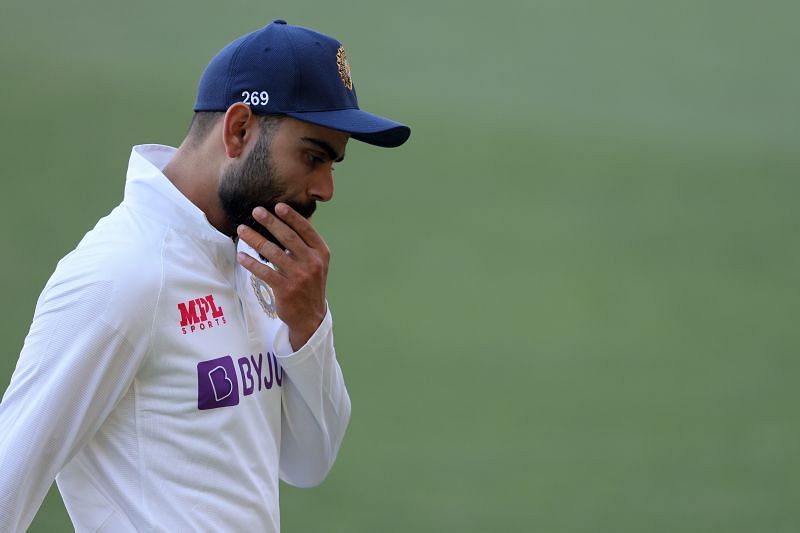
IND v AUS 2020: Intent the key word as Indian cricket team slumps to shambolic defeat
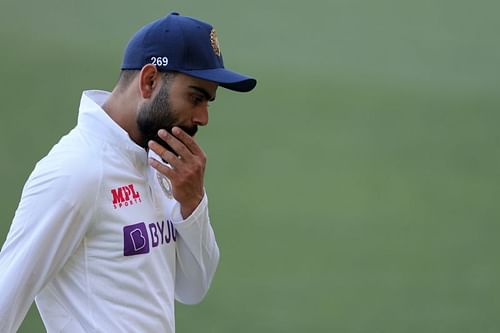
On the 19th of December, 2020, the Indian cricket team found itself with a chance of claiming a historic victory in a Day-Night fixture at Adelaide. Contextually speaking, the Indian cricket team had already fashioned a 53-run first innings lead and only needed to bat sensibly to ensure that the Australians would be put firmly under strife.
Yet, in a turnaround of historic proportions, the Indian cricket team were skittled for 36, which incidentally, is their lowest total in Test history. More worryingly though, it cast light on a rather problematic trend, wherein they’ve wilted under pressure and the batsmen have unmistakably managed to undo the bowlers’ good work.
Post the encounter, Virat Kohli looked visibly disappointed, honestly stating that performances of such an ilk would rarely allow the Indian cricket team to establish a foothold against any team, let alone an Australian outfit that has never lost a pink-ball fixture.
Additionally, Virat Kohli stressed upon another aspect – one that has become hugely synonymous with the Indian cricket team in recent times. And, one that spells the same as ‘intent’.
Thus, as the dust settles on a truly strange and infamous (at least from India’s perspective) encounter, it might be prudent to delve into what Virat Kohli actually meant and whether that was indeed the decisive factor in a game that was keenly contested until the end of Day 2.
To be fair to Virat Kohli, he might’ve just stumbled upon the explanation for the Indian cricket team’s dreadful display. In fact, if one were to dig a little deeper, the Indian cricket team never really thrived at Adelaide when they failed to portray the requisite intent.
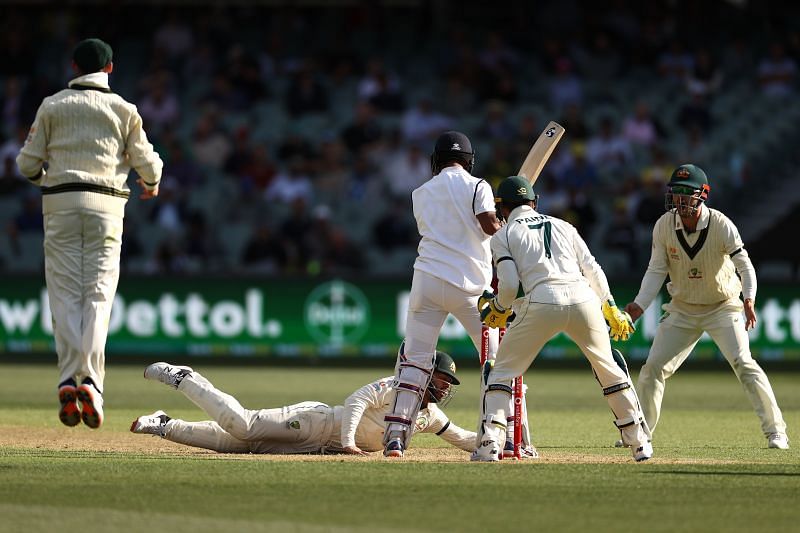
In the first innings, Cheteshwar Pujara, once he had ridden the new-ball storm, was guilty of batting too sluggishly and when he was dismissed, the Indian cricket team wasn’t as far away from trouble as they would’ve liked. The pattern continued in the hosts’ opening essay too, with the Indian cricket team guilty of taking their foot off the pedal, once Pat Cummins had been sent packing.
Post that dismissal, there were a few loose deliveries, Tim Paine was allowed to farm the strike with ease and in general, the Indian cricket team lacked the bite that had gotten them into that situation. To put things into further perspective, the Indian cricket team opted to bowl short at Mitchell Starc and Nathan Lyon – something the pair looked more comfortable against.
Consequently, Tim Paine forged vital partnerships down the order and ultimately, those runs proved to be defining, considering the hosts only conceded a 53-run lead.
Indian cricket team were bowled out for 36 in their second innings
The most telling impact though, arrived when the Indian cricket team came out to bat on Saturday, with the visitors seemingly primed to drive home the advantage they’d generated on Friday.
Yet, somehow, and rather concerningly, they just couldn’t gather themselves enough to handle the Australian onslaught. Most of their batsmen looked edgy and tentative, with nearly each of them possessing the mentality of just surviving rather than scoring runs. In fact, that thought-process could be seen with the way each of their top-order batsmen defended, with their foot movement thoroughly lacking conviction.
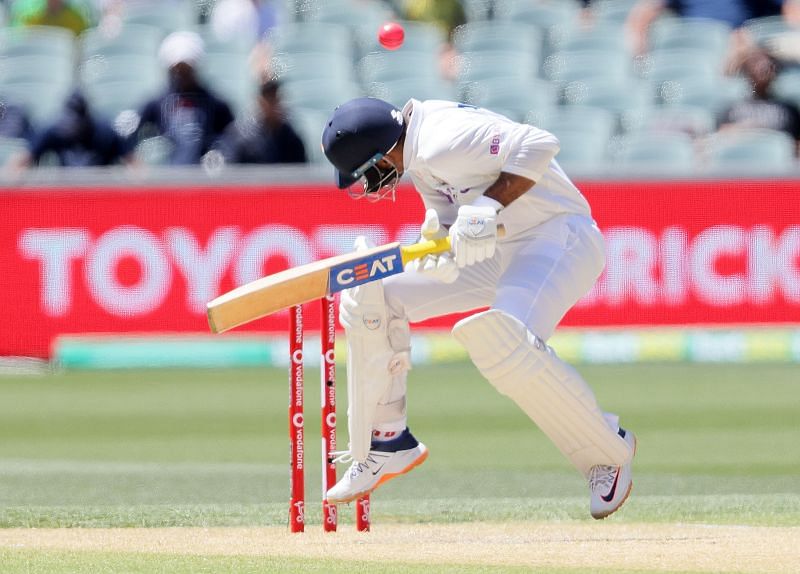
Apart from that, none of the batsmen really tried to impose themselves on the game and signal to the Australians that they had a fight on their hands. Rather, the Indian cricket team batsmen waited for the hosts to surge into the ascendancy, meaning that the visitors became sitting ducks in the end.
On the flip side, Australia, after realizing that they had been a tad too lackadaisical at the start of their batting innings, immediately amended their modus operandi, with Cameron Green and Tim Paine embodying that to the tee. Though the former didn’t trouble the scorers much, the latter ensured that the hosts kept themselves in the game, before the bowlers landed the knock-out blow.
Speaking of the Indian cricket team’s tendency to crumble under the slightest bit of pressure, that has unfortunately become a norm, rather than being an anomaly. One can immediately recall the collapses at the 2017 ICC Champions Trophy final and the 2019 ICC Cricket World Cup semi-final.
In red-ball cricket, the contrast between the Indian cricket team’s performances with intent and sans it, becomes astoundingly alarming and damning.
Back in 2017-18, when the Indian cricket team toured South Africa, they succumbed to a 2-1 series reverse, despite not being outplayed on any occasion. Yet, whenever push came to shove, the Indian cricket team surrendered into their shell, thereby handing the South Africans the initiative.
At Centurion, where the tone was effectively set, the Indian cricket team, barring Hardik Pandya, gave a listless account of itself in the first innings. The distinguishing factor, unsurprisingly, was that Hardik Pandya batted with a positive attitude and made the opposition re-think their plans.
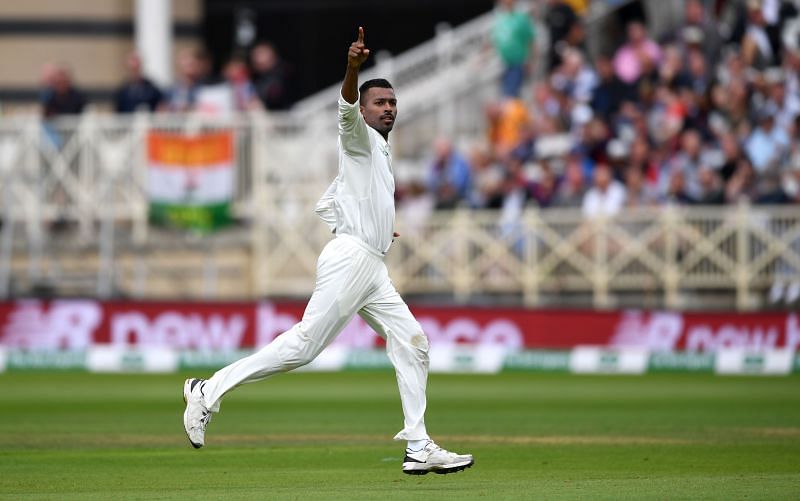
A couple of matches later, at Johannesburg, on an even more challenging surface, the Indian cricket team batted and bowled with the intent of winning the game, rather than just biding their time. And, fittingly, they outwitted the Proteas.
A few months later, in England, the Indian cricket team was chastened to a 4-1 Test series defeat. In a majority of those games, the tourists were content to play the waiting game, instead of being the side to set the game up. In fact, the Indian cricket team only managed to do so with any sort of clarity at Trent Bridge, meaning that they won the encounter by 203 runs.
To be pristinely clear, the idea is not for the Indian cricket team to be gung-ho and reckless in the Test arena. Rather, it is about the mindset and the mechanism that can help them overcome adversity and even, fight fire with fire.
In testing conditions, a lack of a decent scoring rate leads to a side getting stuck in the quicksand, for one wicket-taking delivery would inevitably arrive. At that juncture, despite having batted for a while, the scoreboard doesn’t really move anywhere, meaning that the opposition bowlers still feel they possess a chance.
On surfaces that are slightly more forgiving, the assistance for the bowlers eventually dries up, thereby allowing the batsmen to potentially cash in. Furthermore, the aforementioned parallel can be drawn for top-quality bowling attacks and other line-ups that find themselves a rung lower.

An outfit like Australia simply allows the opposition no respite, for Mitchell Starc and Josh Hazlewood are followed by Pat Cummins (the No.1 ranked Test bowler) and Nathan Lyon (arguably Australia’s 2nd greatest spinner ever).
To further the argument, against teams such as Bangladesh, Sri Lanka, West Indies, the potency of their bowling threat keeps reducing with each passing spell. When confronting Australia, England, New Zealand and South Africa (in home conditions, at least) though, that particular facet remains the same, if not going the other way.
Thus, on tracks and against oppositions that keep posing questions, the Indian cricket team might be better served asserting their dominance. And, by that, it doesn’t mean that the Indian cricket team starts throwing their bat at everything.
On the contrary, it emphasizes how they need to make their opponent know that the former is ready to get down in the mud and has the stomach for a fight.
So far, Virat Kohli’s captaincy tenure has been adorned by extreme highs and marred by gut-wrenching lows. Yet, for someone who has encountered such fluctuations in fortune, it seems astonishing that there exists clear evidence pointing towards where things start turning pear-shaped.
Unfortunately for the Indian cricket team though, Virat Kohli will not be around to shepherd them through another stomach-churning defeat. And, there is also the small matter of the Australians having smelt blood and an Indian propensity to avoid matching the opposition blow for blow.
In fact, if the Indian cricket team had a genie’s wish, they might even want to cast the 19th of December, 2020 into oblivion and start afresh. More ironically though, that could also be the watershed moment where the Indian cricket team starts understanding that this approach, especially under tough circumstances, simply isn’t working. Or, at least, one hopes that they do.
Extraordinary times call for extraordinary measures and one reckons that getting bundled out for 36 would qualify under that criteria, wouldn’t it?